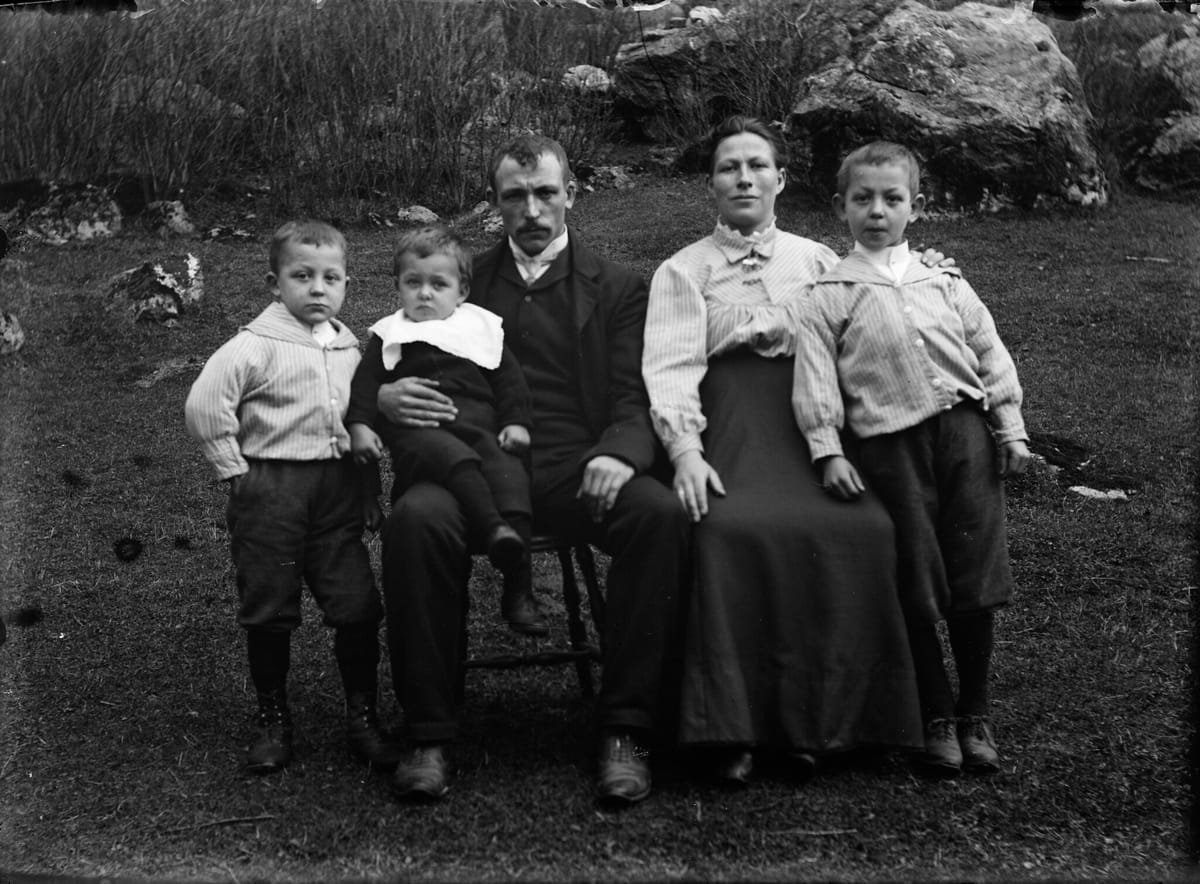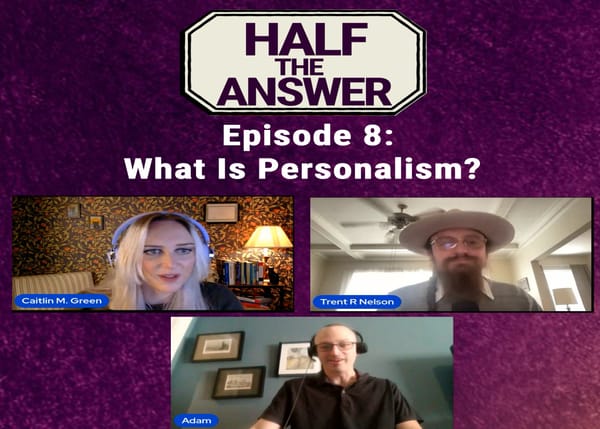Toward a New Masculinity

I sit down to write this essay having just finished washing the dishes from the breakfast I made for my boyfriend. The neighborhood we live in, with an olive oil shop next door, a sushi bar across the street, and an artisanal cheese shop around the corner, I could not afford without his generous assistance. In return I happily take the clothes to the wash and fold and walk to the Whole Foods. The app that sends us housekeeping help is on my phone, not his.
There’s a trope that feminism stands in opposition to masculinity, typified by the man-hating feminist. I don’t speak for all feminists, of course, but I love men. I love masculinity. I’m writing this not because I delight in seeing masculinity in decline. It makes me sad to know that fewer and fewer people get to experience what my partner and I do. I would feel incredibly grateful for my charmed life regardless. But knowing what I know about macroeconomic trends, I feel even more so.
In 2013 I sat on a Heritage Foundation panel about single motherhood. Of the four women participating, I was the only product of one. I hadn’t expected to get angry, because I was young and naïve. The idea from some of the other panelists was that by normalizing single motherhood, the media was encouraging women to become single mothers, thereby exacerbating poverty.
As Ryan Cooper wrote for the Week in March 2017, many D.C. conservatives and libertarians “are obsessed with poor people’s relative lack of marriage. They look at social dysfunction among the lower classes, conclude that it happens because they don’t conform to bourgeois social norms, and then rig up some policy to bludgeon the poor into getting married (and staying in school, getting a job, and so on).”
I love my antiquated gendered norms. Just like some people love the soft, flickering glow of candlelight. Or a hipster loves to jar their own preserves. But as great as they are, candles, preserves, and marriage are all utterly incapable of saving anyone from poverty. More than that, the “traditional” conception of marriage, with a male breadwinner and a wife who works less or not at all, is quickly becoming as workable as candlelight and canning for lower income Americans.
So what then? How do we save marriage? Is it worth saving at all? I think the answer is yes. But to do so, we need a new masculinity, built upon a more solid and lasting foundation of liberal gender norms.
Why marriage isn’t a solution to poverty.
You don’t need the elaborate fantasies conservatives have concocted to explain the trend away from marriage. Murphy Brown and Gloria Steinem didn’t convince women that they “don’t need no man.” Most people still want to get married. According to Pew research only 13% of never-married adults say they do not want to marry.
Marriage rates are only declining among the poor. Among the upper and middle classes marriage is just getting delayed.
The idea that single motherhood is a personal choice motivated by television and movies is belied by the fact that the vast majority of single mothers are poor. In developed nations, 33% of births are out-of-wedlock on average. But when you look at areas where demand for manufacturing labor has collapsed, 70% or more of births are outside of marriage.
The problem? Women, at least 78% of them, highly value a steady job in a spouse or partner. They’re not wrong to. Marriage is only helpful if it comes with resources. And that, for poor women, is getting harder and harder to find.
Men at the middle and top marry women at the middle and top. This phenomenon, known as assortative mating, is a fairly recent phenomenon in the US, and is a driver of inequality. Because assortative mating leaves only men at the bottom for women at the bottom.
Men at the bottom are not doing well. And for that reason they don’t make very attractive husbands. Men are far more likely than women to spend time in prison. There are 20 million men with felony records who are not in jail. And men are less likely than women to earn a college degree. According to the Economist, boys in the developed world are 50% more likely to fail their basic math, reading, and science classes than girls.
The New York Times reports that more than one fifth of prime working age American men (between the ages of 20 and 65) had no paid work last year. Seven million men between 25 and 55 aren’t even looking for work right now. Men Without Work, America’s Invisible Crisis: “In 1948, men made up a little more than a tenth of working age (20-64) Americans without jobs. By 2015, however, they made up nearly two-fifths of this population.”
Between 1979 and 2013 median wages for high-school educated men fell 21% in real terms. During that same period it rose 3% for similarly qualified women.
It’s not that people are choosing to stay unmarried, and are therefore poor as a result.
Instead, a study by David Autor, David Dorn, and Gordon Hanson shores up what other studies have shown. Which is that there simply aren’t enough single, high-earning men at the bottom of the economic totem pole to lift anyone out of poverty. Women at the bottom, unable to find men who can provide materially, have three choices. They can marry a man who is a net economic cost and also does not pull his weight in the realm of housework and childcare. That seems like a bad idea. They can choose not to have children at all. Or they can choose to have kids out of wedlock.
The vast majority of women would prefer to have a partner who does his bit both financially and domestically.
But they would rather do without one than team up with a layabout, which may be all that is on offer: American men without jobs spend only half as much time on housework and caring for others as do women in the same situation, and much more time watching television.
Hence the unravelling of working-class families. The two-parent family, still the norm among the elite, is vanishing among the poor.
How gender norms handicap the poor
A January 2017 New York Times article points out that the large cohort of non-working American men are turning down new service-sector jobs. Why? Because they pay less than manufacturing jobs and have less prestige. But also because they’re “women’s work.”
“I ain’t gonna be a nurse; I don’t have the tolerance for people,” 53-year-old unemployed welder Tracy Dawson told the Times. “I don’t want it to sound bad, but I’ve always seen a woman in the position of a nurse or some kind of health care worker. I see it as more of a woman’s touch.”
“Traditional masculinity is standing in the way of working-class men’s employment,” said Andrew Cherlin, a sociologist and public policy professor at Johns Hopkins. “We have a cultural lag where our views of masculinity have not caught up to the change in the job market.”
This same attitude keeps men from contributing around the house. We stigmatize men who take care of their children full-time and engage in other “feminine” activities. Which puts low-education men in a bind. They aren’t qualified for high-earning jobs. But if they do the labor available to them, they’re emasculated.
The Economist again:
Over the past generation, middle-class men have learned that they need to help with child care, and have changed their behaviour. Working-class men need to catch up. Women have learned that they can be surgeons and physicists without losing their femininity. Men need to understand that traditional manual jobs are not coming back, and that they can be nurses or hairdressers without losing their masculinity.
Norms are useful, but when they are rigid and butt up against economic realities people on the fringes find themselves caught in the middle, squeezed from both sides. Unable to hew to norms, the marginalized find themselves having to choose between staying poor and being mocked or ostracized.
There is so much more to masculinity than the ability to bring home more money than your female partner. We do men and women such a disservice by reducing men to what—and how—they earn.
Tolerance and specialization are prized features of the liberal order. Poor men need our tolerance for a wider variety of ways to perform masculinity so they can specialize according to their individual strengths.
Larger economic trends
At 2017’s World Economic Forum executives at companies working in artificial intelligence, including IBM Corp., Microsoft Corp., Facebook Inc. and Google parent Alphabet Inc., debated the likely impact on employment.
Many business leaders and economists are optimistic about the impact of machine learning on employment, predicting AI will create more new jobs than it displaces, on net. They see automation raising prosperity across the board, just as past waves of innovation have.
Others see a less rosy future. A recently released World Economic Forum study shows that between over the past five years annual median incomes in all advanced economies fell 2.4%. Many economists blame automation (plus global trade) for slow job growth and stagnant wages across the developed world.
“I don’t think you’ve even really seen the beginning of the disruption,” Salesforce CEO Marc Benioff said. “The wave of technology will create a big increase in productivity. But we also risk getting a lot more inequality.”
The problem of inequality has been talked to death. And we’re beginning to grapple with the impact of automation and outsourcing on low-education men’s employment and wages. But how these factors are impacting marriage has not been discussed nearly as much.
The trend of low-education men dropping out of, or never entering, the job market is a massive problem, and it’s only growing. On the EconTalk Podcast, host Russ Roberts spoke with economist Erik Hurst who told him that if you asked a 21-30 year old man with less than a BA whether he’d worked in the past year in 2000, 8% would say they hadn’t worked at all in the prior year. Today, that number is 18% for same cohort. This trend started prior to the recession and hit 18% in 2010 and has stayed there. And these men aren’t in school either. For women, there has been no similar drop off in labor force participation.
It’s a problem not just because men aren’t working outside the home, but because they’re not working inside of it either. America still needs men. Marriage can be a way to utilize male talent and energy once again. But men need to become worth marrying once again. Some of them can do so by learning how to earn money in a shifting economy. Others will need to take greater responsibility for helping out around the house. Most will need to do a little of both.
A way forward
There is no silver bullet solution. When it comes to earning potential, some, like technology thinker and entrepreneur Anil Dash, see coding as a viable replacement for the manufacturing work we’ve lost to outsourcing and automation. He recommends that high schools offer coding classes, perhaps through vocational programs. It would also help if we as a culture could stop telling our children that racking up debt for a four-year degree is the only path to success, when there are skills they can learn just as effectively at a community college. For those already in the job force, programs like Dev Bootcamp offer a way to pick up coding skills.
Of course, not every man is going to be a coder. Other, more traditional vocational paths, such as becoming an electrician or plumber, are far too undervalued. Ultimately, however, more men will have to embrace a broadened vision of manhood.
I think marriage is worth saving. And I think it can be saved by embracing the liberal principles that helped bring much of the world out of grinding poverty. Deirdre McCloskey, emerita professor of economics, history, English, and communication at the University of Illinois at Chicago, recently wrote for Reason, “Adam Smith defined liberalism in 1776 as the shocking idea of ‘allowing every man [or woman, dear] to pursue his own interest in his own way, upon the liberal plan of equality, liberty, and justice.’”
Instead of prescribing a narrow, stifling, and ultimately unworkable path for men, why not broaden masculinity to encompass more general principles? The Art of Manliness posits 3 P’s of Manhood: protect, procreate, and provide. There are myriad ways to protect, procreate, and provide that have nothing to do with breadwinning. To protect the home and family from those who would do them harm does not require a high income. Nor does procreation. There are many things a husband can provide that have higher value than a paycheck. A husband can provide a safe, clean home. He can provide training and education to his children. He can provide transportation and planning and all the things it takes to run a modern family. There is nothing to keep modern men—even ones who are not incredibly competitive in the job market—from being fabulous husbands and fathers but our own narrow ideas of what is valuable about men.
American marriage among the poor is kneecapped by the idea that work traditionally done by women is less important, valuable, and respectable than work generally associated with men.
People like me, with college degrees and middle-class incomes can afford to be antiquated in a way that people without those privileges cannot. I recognize that it’s rich for me to prescribe a vision of masculinity for others that I’m not willing to adopt for myself. But it’s my love of men and everything they offer that makes me want to find ways to make marriage work for everyone again, and not just the privileged few.
Featured image taken from Paul Stang




